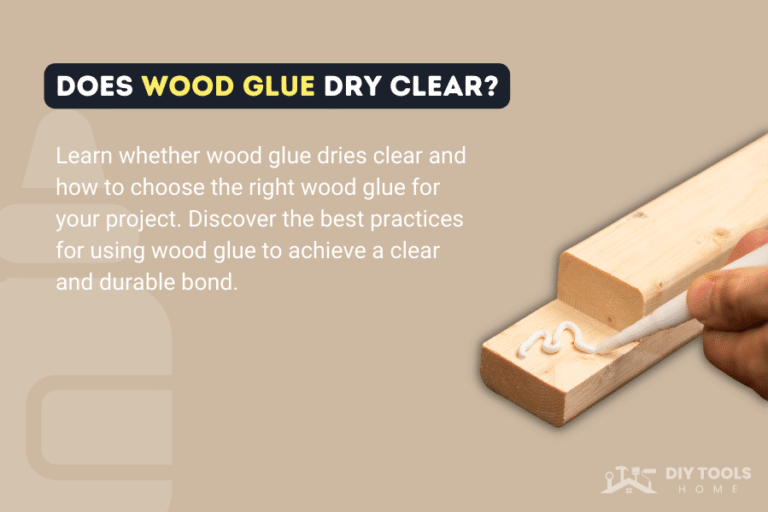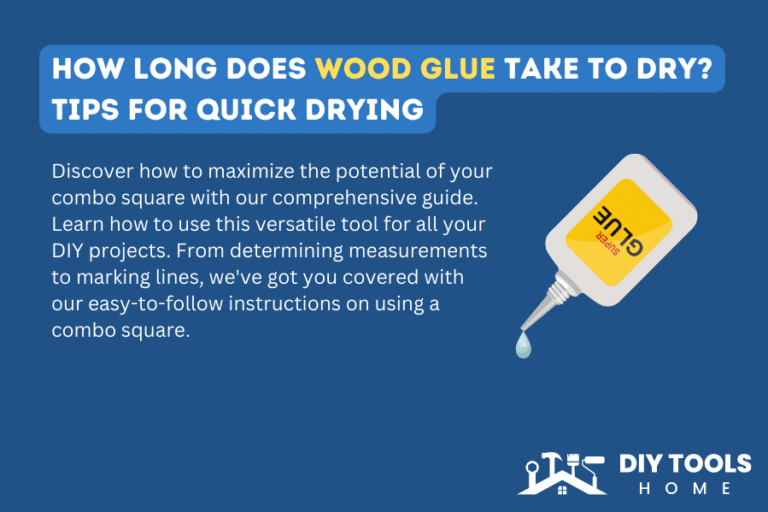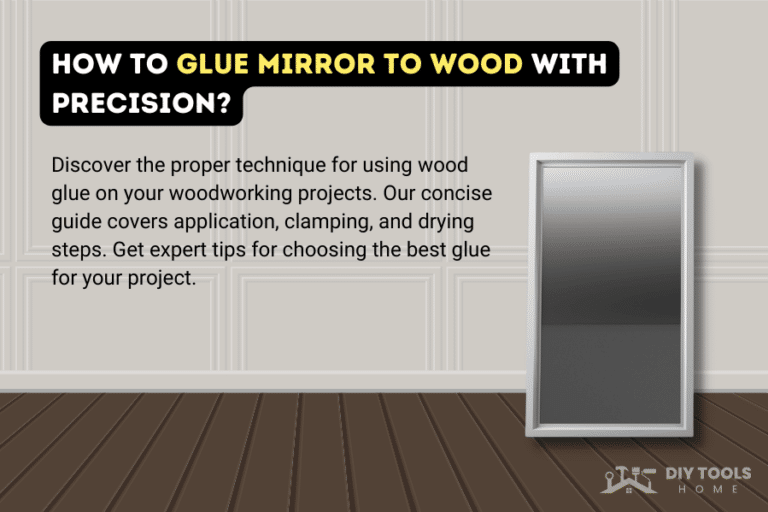How To Remove Glue From Wood? 10 Proven Methods

Have you ever been engrossed in a crafting project, only to realize too late that the glue has spilled onto your wooden floor or countertops? The unsightly stain left behind can be a frustrating eyesore that detracts from the natural beauty of the wood. Fortunately, there are numerous ways to effectively remove glue from wooden surfaces, both with commercial products and natural remedies.
While commercial glue removers can be a convenient option, they often contain harsh chemicals that can be harmful to both your health and the environment. On the other hand, natural solutions like vinegar or nail polish remover offer a gentler, eco-friendly alternative to removing glue stains from wood.
If you’re searching for the most effective and safe methods to remove glue from wood, you’ve come to the right place. In this article, we will explore different ways to tackle this common problem and restore your wooden surfaces to their former glory. So let’s dive in and discover the best ways to remove glue from wood!
Table of Contents
Before You begin
There are several methods for removing wood glue, like sanding, scraping, or wiping after the bond becomes softened with any solvent. The correct way selection depends on the type of wood you are working with or the type of glue stuck to the wood.
It matters whether the wood is completed or unfinished since some solvents used for finished wood can discolour unfinished wood and destroy its beauty. For detailed glue removal, look at the instructions provided by manufacturers. Visit their website or look at the back of their container.
You can also try techniques we will discuss to get glue or adhesive residue off your wood surface if they don’t include instructions.
Different Ways to Remove Glue from Wood: [Detailed Guide]
Dropping glue on your antique wood or wooden floor while building, repairing, or crafting might spell disaster because this wood glue takes different drying time and stick hard to the surface. But it doesn’t mean your furniture is ruined. However, industrial and home cleaning solutions can remove glue from wood and hardwood floors. Look into the differences between raw and finished wood in removing the glue.
The following techniques are the best for removing dried wood glue from wood:
1. Use Sandpaper to remove the glue
Sanding dries off is the most basic and traditional method for removing glue from wood. Sandpaper is a common material that every woodworker and homemaker probably has in their hands. You can buy from a nearby hardware store if you don’t have any, as it’s readily available.
Although sanding sometimes gets a bad image for being too abrasive, it’s a great way to treat wood surfaces without spending hours removing wood glue. Follow these steps to get rid of stubborn glue stains:
- Select 600-grit sandpaper, a fantastic sandpaper less likely to damage your wood.
- Remove the dry glue from the wood until the sandpaper is level with the wood.
- If 600-grit sandpaper is inadequate, you can use finer 1200 sandpaper.
- After removing the stain with sandpaper, apply a dull gloss finish to regain the shine of the wood.
2. Use a Heat Gun

Be careful while doing this step; use a heat gun or hairdryer; you need only to heat the glue, not burn the wood, so only apply enough heat, so the glue gets melted. Use hairdryers or heat guns, and stick to low while using a heat gun to remove glue from wood. In case of high, you might burn the wood.
- Apply heat for a few seconds to get the glue to soften. Wear a mask while dealing with glue because excessive inhalation of its fumes makes it ill.
- Use a plastic putty knife rather than a metal one to remove the glue carefully.
Be cautious when scraping to prevent damage to the wood while removing wood glue. A hairdryer will do the trick if you don’t have a heat gun. When around heat, be sure to use protective gear.
3. Use Nail Polish Remover
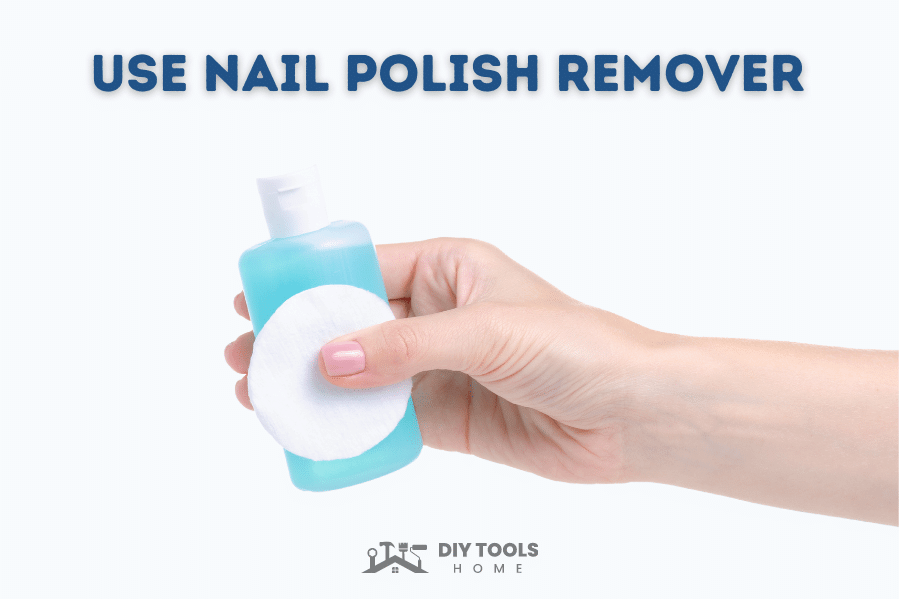
Excellent nail polish remover may dissolve substances like wood glue without significantly altering the colour of unpainted wood.
- Using a cotton ball, apply nail polish remover.
- Hold it for two minutes on the wood glue.
- Use the cotton ball to remove the adhesive.
- Use soapy water to wash away extras.
4. Get Some commercial glue remover
The use of commercial glue is handy if you can trust the product created by professionals. Some Popular commercial glue removers are Go Gone Original and Loctite Glue Remover. Here’s how commercial glue remover is used to remove glue from wood:
- Take a clean piece of cloth.
- Add a small amount of commercial glue remover to the cloth.
- Carefully wipe and dab the fabric until the glue is removed.
You don’t need much hard work to remove glue with commercial glue remover. You can easily find commercial glue removers from hardware stores or online stores. The cost of adding this item to your collection of cleaning supplies is low.
5. Scrape the Glue with a Spatula
If all else fails, try a spatula for removing wood glue. This technique can remove stickers, dried glue drips, and fabric glue from unfinished wood. It may be a surface your kid decorated with stickers or leftover glue from a woodworking art and craft project.
- Scrap off the glue as much as possible.
- Hold a rag moistened with warm water over the leftover glue for a few minutes.
- Wipe off the remaining glue with a clean cloth.
Most of us have a spatula at home and wiping off hard glue from wood without damaging it is easy.
6. Use Baking Soda
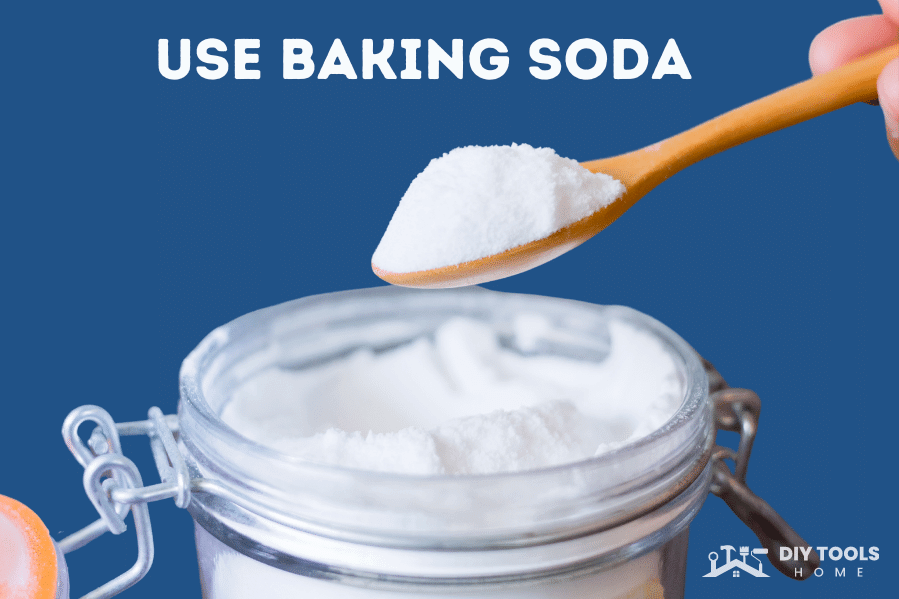
Another easy and effective method is using baking soda to remove glue stains from wood without much effort. Baking soda is something that you can get from your kitchen. Here are the steps to use baking soda to remove glue from wood.
- Use a heat gun or hairdryer to soften the glue.
- Remove the extra glue with the spatula.
- Create a paste with baking soda and boiling water thick enough to distribute well.
- Apply the paste on the stain and leave it for 10 minutes.
- Scrub the excess with a wet sponge, then wipe the remaining material with water.
Baking soda is an inexpensive, easy, shorthanded method and doesn’t create a mess while applying this method.
7. Using Mineral Oil
People have used mineral oil to clean up glue stains for many years. Here are the steps to show how this process works.
- Heat the glue using a heat gun or hair dryer.
- Place a wet towel in the microwave for 15 to 30 seconds.
- Make sure to remove it carefully since it will be pretty hot.
- Spend around 30 seconds dabbing the glue with the moist towel.
- Repeat the process if the bond is not removed, and try to peel it off as much as possible.
- Apply a small amount of mineral oil on the remaining glue and then scrub with a clean cloth.
8. Utilize Steel Wool
Steel wool works the same way as sandpaper works to remove the glue. You can easily buy from any hardware store. It works more efficiently to remove glue on the surface of unfinished wood.
Steps to use steel wool:
- Purchase steel wool.
- Remove wood glue by rubbing.
- Repeat if needed.
Steel wool is one of the methods of removing glue from wood; therefore, avoid using it on varnished or painted wood. It makes a reasonable choice that helps with a variety of
projects.
9. Acetone
It is only suitable for small stain areas. Acetone is readily available in hardware stores.
Steps to follow:
- Take a clean cloth and dab the cloth with a small amount of acetone.
- Rub gently on the affected area.
- Clean the area with a wet and then a dry cloth.
That’s how it’s an easy method to peel off glue stains. Acetone is readily available in the hardware store. It would help if you had great caution while using this product for removing dry glue from wood. Avoid inhaling acetone fumes as it’s become dangerous for you. In this situation, protective equipment is helpful.
10. Use of Vinegar
Vinegar is a fantastic natural alternative, especially when you are worried about using chemicals that damage the wood finish.
- Soak a clean cloth in half a cup of Vinegar.
- Dab gently on the affected area until the glue becomes soft and loosened.
- Then roll out the glue with the help of your fingers.
The use of white Vinegar is a natural, safe, and nontoxic method. Use steel wool to remove any leftover surface stains that are particularly difficult to remove.
Conclusion
If you spill glue on a wooden floor or want to remove already applied glue, apply it cleanly during a woodworking project. No matter where it is spilt or how many leaks, from solid wood flooring to laminate flooring to small construction jobs, glue can be exceedingly sticky or difficult to remove. You can follow the above methods to remove the glue quickly.
Furthermore, there are different kinds of wood glues which are ideal for different woodwork types. Choosing the appropriate wood glue is crucial for the success of your project. The wrong glue can lead to weak bonds or make future repairs difficult. Take the time to assess your project’s requirements and research the best wood glue for the job.
FAQs
What Is The Best Method To Remove Dried Wood Glue?
To find the best approach, first, you must examine the wood material and then select either technique. Use sandpaper to remove dried glue from the unfinished surface of the wood. Sandpaper quickly gets off the dried glue and removes it from the pores of the material. It’s an affordable and effective method.
While on the other hand, use Vinegar or mineral oil to peel off dried glue from finished wood without damaging the wood finish.
How To Remove The Wet Glue?
The first measure you can take is to avoid spilling glue. Carefully apply glue, and don’t apply unnecessary glue on the project. If glue spills on the wood, wipe it off with a clean cloth as soon as possible. If you leave it for longer, it will leave a stain underneath the projects.
Will Vinegar Remove Glue Stains From Wood?
Yes, white Vinegar is effective in removing dry glue from wood. You can do this by soaking a clean cloth in Vinegar and then rubbing it on the affected area.


